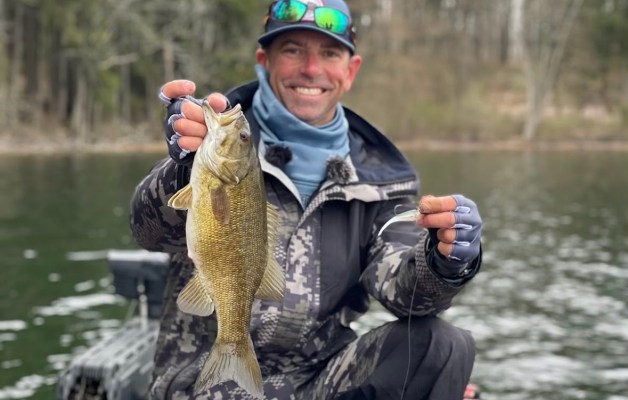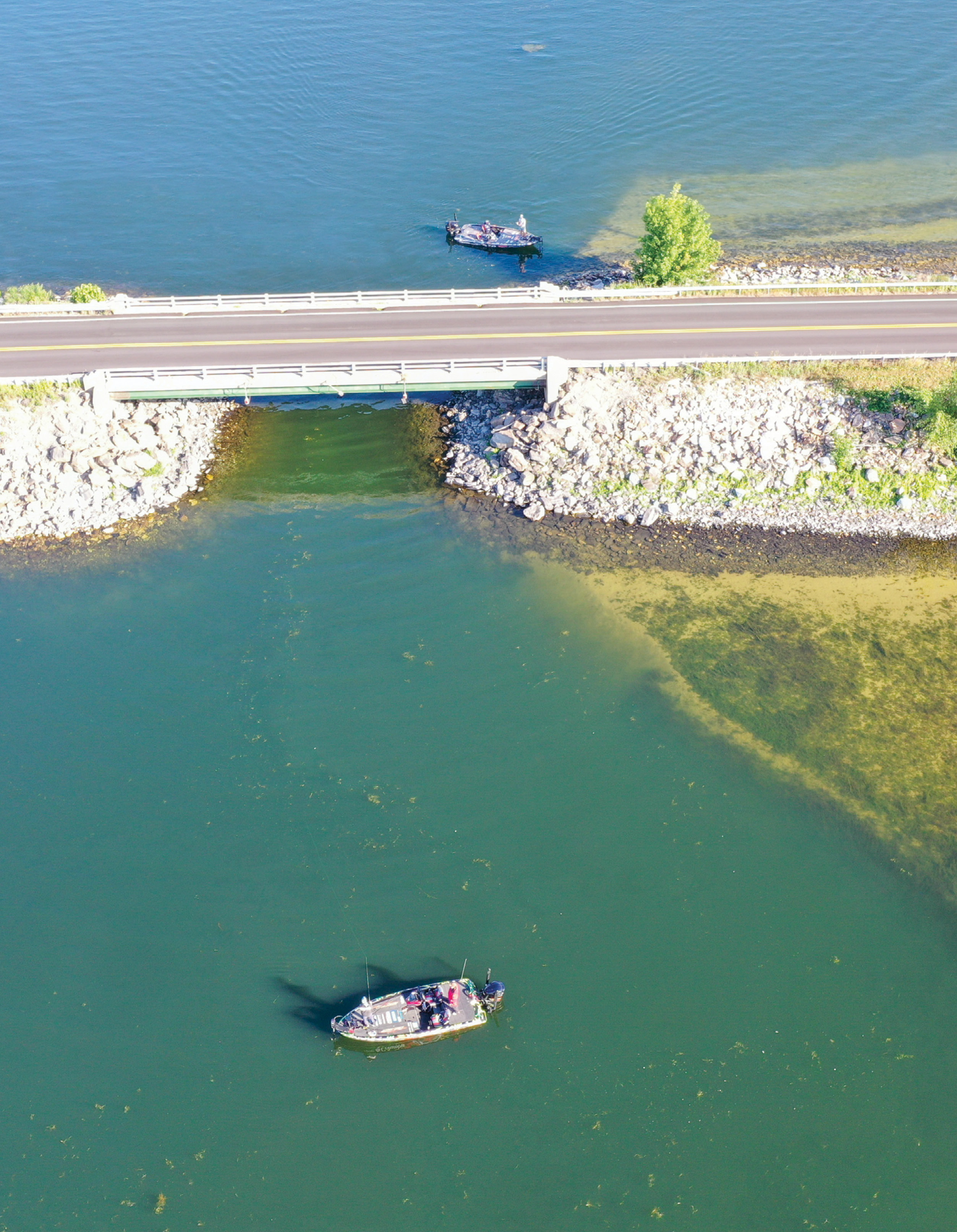
Take the frugality mantra “if it’s free, it’s for me,” replace “free” with “easy” and you have the very essence of why bass do their best feeding around choke points. Applicable year-round, the notion of structures natural and man-made funneling water flow and thereby concentrating food sources proves particularly relevant when fall finds fish focused on filling their bellies.
Bridges, creek mouths, big laydowns, river islands — anything that chokes or narrows the water’s course presents a definable path that opportunistic fish will leverage. Sounds pretty straightforward, but learning to identify specific scenarios and understanding how fish will use them can yield an autumn abundance.
Beyond the more obvious stuff, three Bassmaster Elite Series pros shared their favorite examples of where and how to make the most of fall choke points.
Creek peaking
For most Southern reservoirs, hunting the shad eaters in the backs of pockets is pretty basic, but Alabama’s Wes Logan finds some of his best opportunities by seeking out a particular scenario in which contour funnels baitfish into a targetable scenario. Think: cattle chute.
“What I like to find is where the back of a creek starts to shallow up; say, the whole pocket is 10 to 12 feet deep and then the bottom starts rising up and it makes a dropoff, coming from the back,” Logan explains. “About where it starts to raise up onto this flat is where the bass are going to be setting up.”
To make this an actual choke point, Logan further refines his scenario. “You want the last point of a pocket or kick-out where it is choking down right there. Unless it’s just a true bowl pocket, you’re going to have your last major point or kick-out as the depth is raising up. All of that’s going to happen at the same time.”
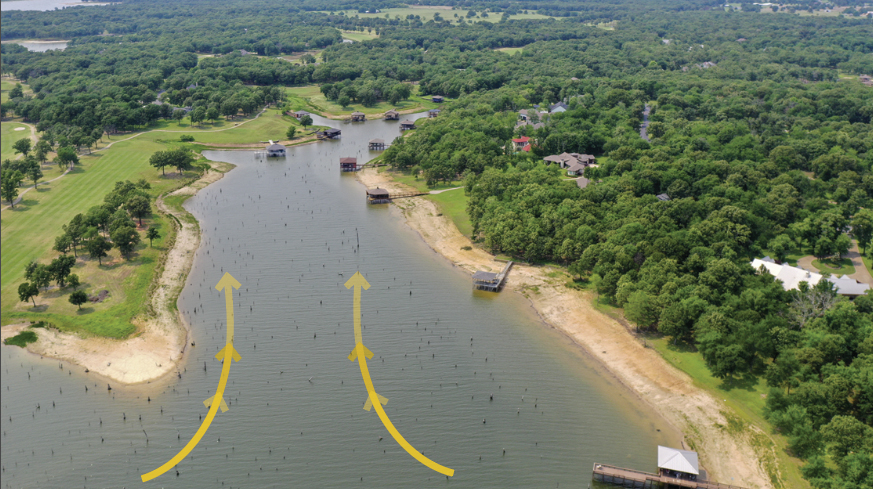
Best baits: The Team Ark Elite Z-Series lipless crankbait tops Logan’s list, as he can work it in 6 inches or in 4 feet. If he gets some wind, he’ll work in a spinnerbait or buzzbait. A squarebill also merits a handful of casts, as does a topwater — in strategic form.
“If there’s been some fish blowing up and I’ve caught a few on the lipless bait but I don’t catch anymore, sometimes I’ll throw a Team Ark Topwater Blower,” Logan said. “Sometimes you can get an extra bite or two, and sometimes you can get an even bigger fish to trigger on that topwater.
“If I don’t get any extra bites, I’ll drag a shaky head through there with a Zoom Trick Worm. Sometimes you can get a fish that’s not really aggressive — one that you may have thrown past a couple of times. A shaky head is a good cleanup bait.”
The key: “When you have a choke-down point like that and it’s getting shallower, you want to be as quiet and as stealthy as possible,” Logan said. “I’ll use my Minn Kota Raptors a lot.
“Sometimes I’ll ease into places like that, put my Raptors down and just sit there to see if there’s some bait activity on top, if there’s any schooling or if there’s not a lot of activity and the fish are set up on that actual ambush point.”
If the spot is alive with activity, Logan immediately peppers the water with casts. If not, he’ll position downwind or downcurrent of the point and target that likely holding spot.
Don’t skip the doorway: Creeks with bridges, be it a highway or two-lane local road, present the most dependable, textbook choke point example you’ll ever find. Depending on seasonal progress, most of the fish may have already passed this emergent reef, but unless he’s certain of the fish’s advancement, Logan’s going to give it a shot.
“A fish knows that the bridge is the one way in and the one way out of this tributary creek or pocket,” Logan said. “Everything that’s going to the back has to come and go through this choke point, so that fish has everything bottled down.
“He’s going to set up the easiest place he can to ambush the bait, whether that be setting up on the bridge columns or getting on one of the four corners of this bridge [at the end of the riprap embankment].”
With minimal rain this time of year, there’s typically not a lot of lake current in the fall (post-drawdown), but wind will influence how bait moves around a bridge choke point. In any case, Logan likes a squarebill and spinnerbait, but he’s not married to a match-the-hatch notion.
“A lot of times, you can throw something bigger or smaller than the [indigenous] bait because there’s so much, and that can easily trigger a strike,” Logan said.
Seams to be working
Each fall, Michigan pro Chad Pipkens can count on a big push of shad into the Detroit River and, while funneling into this link between Lake St. Clair and Lake Erie fits the broader picture, he’s keen to leverage a more specific choke point scenario. More dynamic than a hard-cover element, Pipkens’ deal is all about the water itself.
“In the fall, the bait migrates into the mouth of the river and the big thing is that the fish relate more to water flow than exact pieces of cover,” he said. “So, instead of casting directly at the rock or a high spot, where the current flows around the high spot is the bigger player.
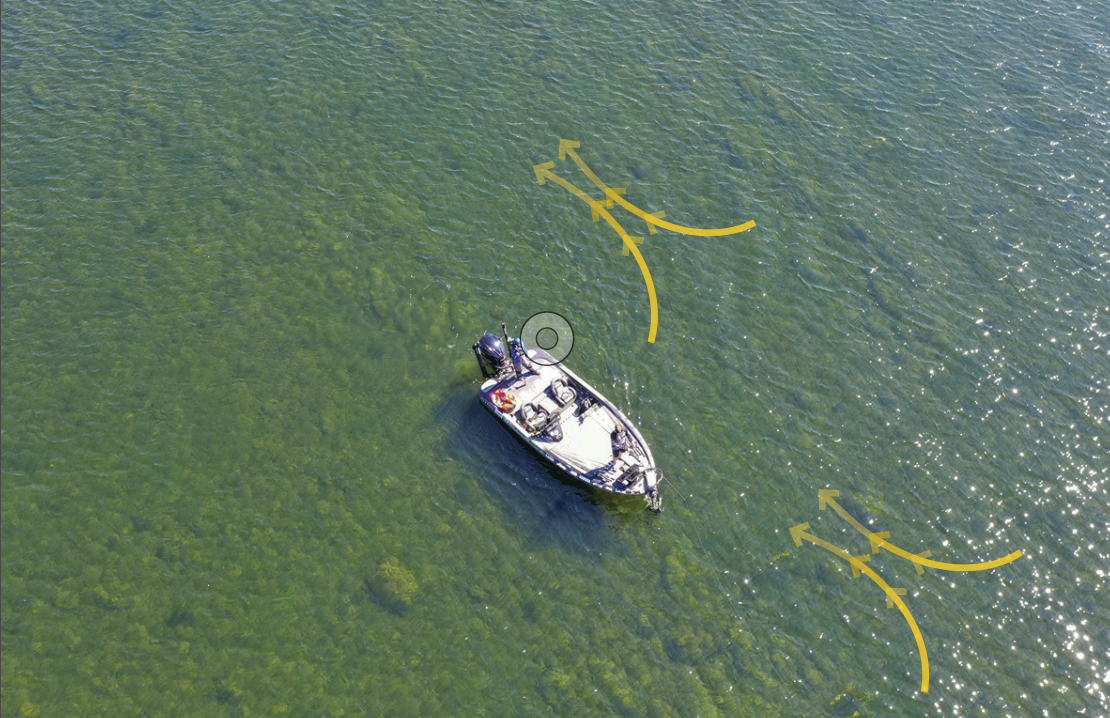
“You’re looking for those funnels and ditches and turns to position the fish in the current. A lot of times, you target a rockpile, but [this time of year] the fish don’t sit on the rockpile; they sit off to the side where the current gets pushed back around.”
Benefiting from the intense water dynamics, the fish will position where they can take advantage of the water sweeping around the structure, tightening up and dumping food right at their feet (or fins). Not unlike trout pools in a swift, boulder-strewn stream, it’s Feeding Efficiency 101.
The only buzzkill is the wrong wind.
“You have those two huge bodies of water — Lake St. Clair and Lake Erie — and you’re fishing the mouths, so if you get a south wind, it backs that current up,” Pipkens said. “It can just ruin the places you were catching them because there’s no [water flow], and then the fish just go wander, suspend and roam around. They don’t get dialed in.
“Conversely, if you get a hard north wind where it’s really pushing the water down St. Clair and really speeding up the current, it can almost become too strong. I’ve seen it where they don’t sit in the current spots — not because they can’t hold; I just think it’s too much work for them. So they just sit on the edges and the back side.”
Stay on target: Establishing effective casting angles is critical here, and Pipkens knows that holding his position requires the right tools.
“I run a Minn Kota Ultrex trolling motor, so Spot-Lock is key,” he said. “Also, my Dakota Lithium batteries are huge, because if you find the right stuff but the wind blows with the current, your batteries might die by noon or 1 o’clock.
“That won’t happen with a good lithium battery. That’s big when you find that sweet spot and you can stay on it.”
Best baits: No surprise, a drop shot with a finesse worm or a darter is one of Pipkens’ go-tos here, but he finds the fish often get on the Lunkerhunt Spicy Tube with a vengeance. Pipkens surmises that the tube, as well as a Ned rig, appeals to fish that are pinned to the bottom. Gobies, crawfish and small perch complement the shad run in this fishery, so it’s good to balance the higher presentations with the downstairs looks.
“Even though the fish push into that river to follow the baitfish, you still catch a lot of them dragging,” Pipkens said.
If a strong wind has the surface water moving one way while the lower current’s going the other, Pipkens often finds the fish will suspend midwater column. Here, a medium-diving crankbait will tempt these fish.
The key: Looking at the complete fall picture, Pipkens said he knows he can still catch fish that are chasing bait across shallow flats, but this current choke point deal is much more dependable. As he puts it, the majority of fish would rather take the easy, lazy way — but that doesn’t mean an angler can slack off.
“Presentations need to be really natural,” Pipkens said. “Sometimes, they’re superspecific; other times, they just eat anything as it’s falling. Then there are times when your bait needs to come through like it’s floating along the bottom.
“When they’re eating it and you’re dialed in, you can Spot-Lock and cast — that’s my favorite. But there are other times when I almost have to drag my boat through there; I just follow the current sweeps and turns by positioning my boat and jogging the trolling motor left and right to follow the right depth or the right line where the current is flowing.”
Pipkens notes that, in this particular choke point scenario, the fish are so locked in on snaring baitfish that simply flow past in the current that it’s typically best to minimize the action. Here, he said, less is more.
“It’s hard to not work your bait, but sometimes if you work your bait too much, they don’t bite it,” Pipkens said. “They literally want it on the bottom, doing nothing.”
Just winging it
On his upper Mississippi River home waters, Austin Felix looks forward to the fall consistency he finds around wing dams. These rock jetties installed to direct water flow toward the main channel and minimize dredging needs also concentrate bait schools and create smallmouth feeding funnels.
“When all the big smallmouth move out to the main channel, they’ll get up dirt-shallow where you see them with their backs out of the water, pushing shad up on the tops of the wing dams,” Felix said. “It’s mostly a morning thing, and then later in the day, they’ll slide off on the side of it.

“It’s so pronounced in September and October on the river that the guys that are doing this will double the weights of the guys who are chasing largemouth. You’ll see the biggest bags of the year. For five fish, you’ll see 22- to 24-pound bags of smallmouth that you just don’t see the rest of the year.”
Best baits: Felix said topwaters are his pick for quickly probing wing dams for fish that are mostly looking up to feed. Traditional walkers like the Heddon Zara Spook work well, as does a blower-style bait like the Evergreen Shower Blows.
Once the fish pull back from upper-level feeding, the wing dam bite gets pretty tough, but if Felix still believes in the spot, he might probe the deeper sides with a small swimbait, fluke, shaky head or tube.
“Sometimes, you can’t drag anything because that rubble is just too snaggy,” he said. “Most of your damage is going to be done with a topwater, and once it slows down, you may want to try and catch one or two more, but I prefer to not take too much time doing that.
“I’d rather run to a different area, even if it’s a little later in the day. If someone hasn’t hit a wing dam yet, you may get a residual fish that’s still up there feeding by throwing a topwater.”
The key: Felix won’t park on a wing dam unless it produces several good bites. Typically, a run-and-gun strategy yields the best results.
“You run as many [wing dams] as you can as fast as you can, just trying to get a bite and figure out which ones have fish on them and how big they are,” Felix said. “They’ll show themselves if they’re there.”
Grass game
Fall finds aquatic vegetation topped out and often showing signs of the ensuing die-back. While flipping/punching the mats, frogging the sweet spots or running a buzzbait, bladed jig or lipless bait along the edges will often produce, don’t overlook the subtle choke points.
Specifically, blow-through lanes will funnel bait and create predictable ambush spots.
“If you have a lane in the grass, those fish will back up into it and look out for the bait as it’s coming by,” said Wes Logan. “I’ve seen on Lake Guntersville in the fall where it may be a boat lane — that’s your most defined edge — and you’ll see the shad swimming through and the fish running out of a wall of hydrilla and running back in.”
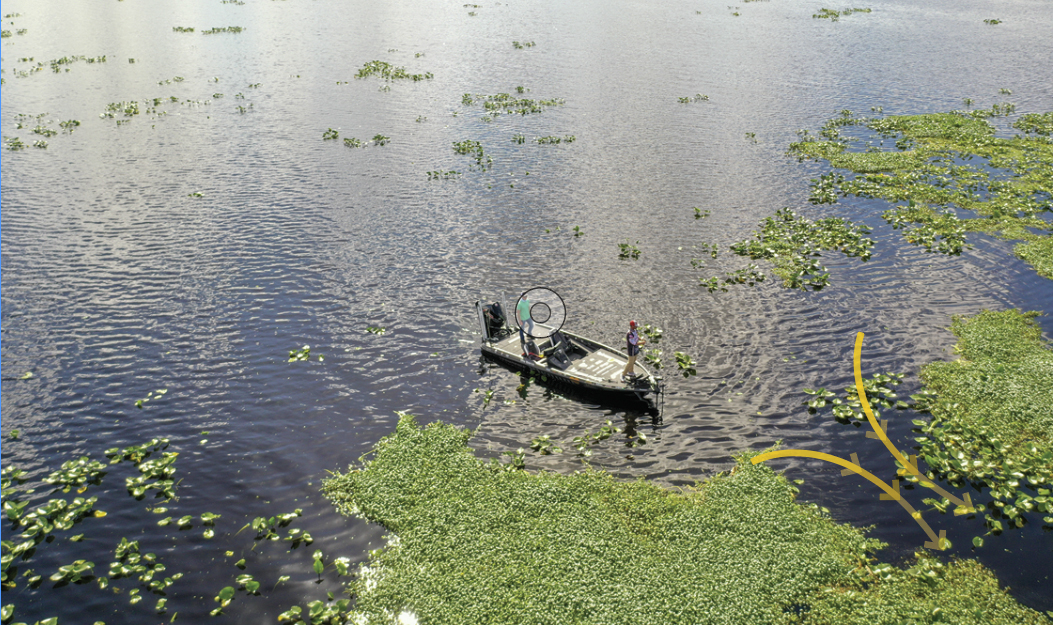
Best baits for a grassbed choke point include swim jigs, vibrating jigs and frogs. If Logan can’t get bit on reaction baits, he’s keen to flip the edges of a grassbed choke point.
“The fish are going to congregate to that area because they know that if any type of current or wind starts, it’s going to be a feeding opportunity; but if it’s just kind of slick, they’ll just be hanging around that general area,” Logan said. “In any choke point scenario, the fish will be around that area, so you have to figure out how to make them bite if they’re not in a feeding mood.”
On a smaller scale, Logan finds that isolated clumps of grass — possibly the outer fragmentation that occurs later into fall — create another type of choke point. Think of a pinball machine’s bumpers, which guide the ball throughout its course. Spot several bait pods navigating such tattered edges and you can bet the fish are there too.




